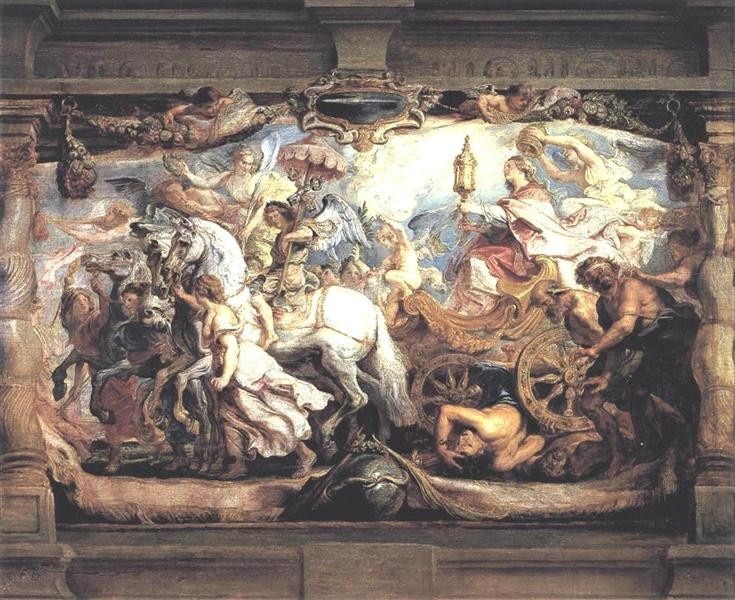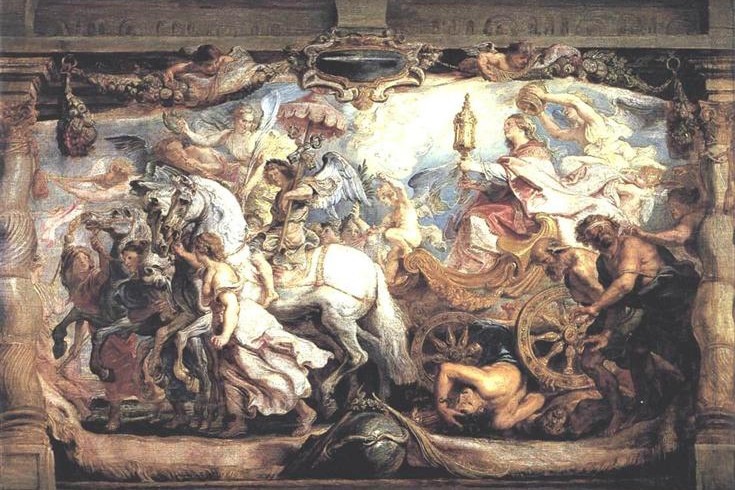The idiosyncrasy of love, duly addressed in many works of art, has quivered with ambition throughout the history of art. Revolutionary, experimental, compromising and at times disruptive, it has always been in pursuit of an aesthetic extremism that praised the ruthlessness of human viciousness.
As the taste for provocation caught on, the principles of art were overturned. The traditional elegance and beauty of painting were being put into sharp contrast with the themes of love.
After Valentine’s Day, a Monday fully dedicated to love, let’s discuss hatred and anger, two shameful feelings that are nonetheless part of human nature. This hot topic, almost embarrassing in art, calls for a reflection.

Dosso Dossi, the main painter at the Este court in Ferrara in the early 16th century, presents us with a special series of nine paintings, only seven of which were recovered. They all have a particular shape - they are square-shaped, while the characters are painted in such a way as to look like rhombuses. In the series, the subjects represent senses and instincts, and the work in question focuses on the feelings of anger and rage during a fight. The scene is occupied by four people, two men and two women, the latter being more prominent and occupying more space as if they were the two protagonists. However, the real subjects of the work are the bread and the glass in the lower corner. The furious quarrel is caused by the bread, perhaps too little to satisfy everyone’s hunger, and the spilled glass is the consequence of the feeling caused by this scarcity. Cause and effect.
Dosso Dossi’s painting breaks away from the artist’s usual elegance to embrace the idea of an ugliness from which he himself seems to be fleeing, and he advises the viewer to do the same. These emotions must be kept at a distance.
A different interpretation, with completely different subjects, is offered to us by Peter Paul Rubens, a Flemish painter active at the end of the 16th century and the beginning of the 17th.

In The Triumph of Church over Fury, Discord and Hatred, Rubens addresses the feelings of defeat. The execution is triumphal, splendid and extremely elegant. The Church, represented on a chariot, advances triumphantly against all feelings of hatred, proclaiming its omnipotence. Good against evil. Mercy against severity. Justice versus partiality. Hatred defeated under the church, a plump woman, a figure that is quite common in Rubens’s paintings but which is also extremely significant in this work. Opulence and misery, this is what the Flemish painter represents, all in a whirlwind of disarming shapes and bodies, extremely fascinating, a criticism that defeats the idea of ugliness that the painter used to argue above all through the weaknesses of the human soul.
There is endless literature on hatred, told through tragedy or religious metaphors, especially in painting. Ugliness has a lot in common with beauty, and love has a lot in common with hatred and anger.
As Baudelaire wrote: “For certain spirits, more precious and more jaded, delight in ugliness proceeds from a still more obscure sentiment – the thirst for the unknown and the taste for the horrible. It is this sentiment, whose germ, more or less developed, is carried within each of us, which drives certain poets into the dissecting room or the clinic and women to public executions. I am sincerely sorry for the man who cannot understand this - he is a harp who lacks a bass string! […] There are those who blush to have loved a woman as soon as they perceive that she is stupid. These are vainglorious jackasses, born to crop the foulest thistles in creation or enjoy the favours of a bluestocking. Stupidity is often an ornament of beauty; it gives the eyes that mournful limpidity of dusky pools, and that oily calm of tropical seas.”


